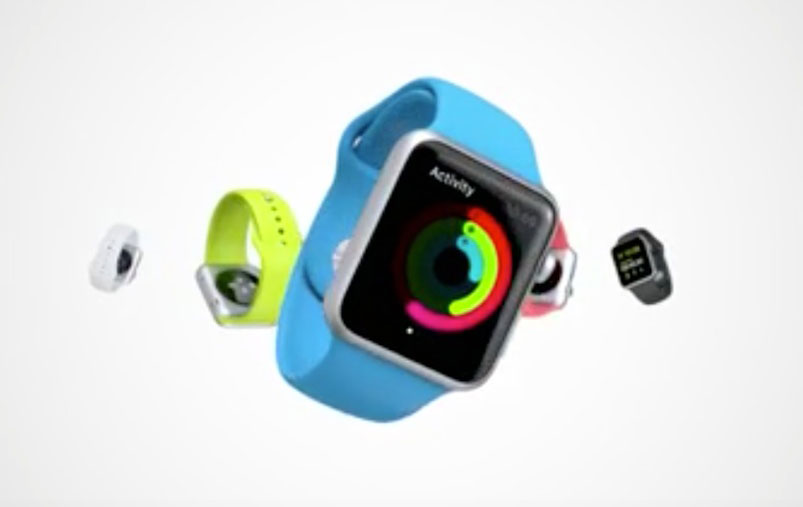Smart Health: Apple Watch Wants to Get You Moving

Apple's new smartwatch, Apple Watch, aims to get people to move more by tracking their daily exercise as well as sitting time, according to an announcement from the company today (Sept. 9).
"Being more active is one of the best things you can do to improve your health, and Apple Watch gives us the ability to motivate people to be more active," Tim Cook, CEO of Apple, said at the Apple Watch unveiling today in Cupertino, California.
Apple Watch has a fitness app that monitors a person's movement throughout the day, using the watch's accelerometer and gyroscope, and suggests activity goals to work toward. For example, it has an "exercise ring" that fills up with color as you complete more activity during the day. When you complete the recommended 30 minutes of activity in one day — either all at once or in bouts — you "close the ring," and complete that goal, the company said. [Fantasy Fitness Tracker: 8 Absolutely Must-Have Features]
The Apple Watch also has a "move ring" that fills up as you burn calories and a "stand ring" that fills up as you stand during the day. For the latter, if you stand for at least 1 minute every hour, during 12 hours of a day, you complete the ring. (An increasing amount of research has shown that in addition to not enough exercise, too much sitting is bad for your health.)
A separate workout app in the Apple Watch will track your stats during a workout, including how far you've gone, how fast you're moving and the length of your workout. Data from your Apple Watch can be stored on the iPhone's Health app, which can be accessed by third-party apps, the company said.
The device "gets to know you the way a personal trainer would," and delivers personalized goals as well as reminders to be active, according to a video shown during the announcement. The Apple Watch can also measure the intensity of your workout by tracking your heart rate.
Many of the health components in Apple Watch are available in fitness trackers, such as Basis and Withings Pulse O2, but the Apple Watch lacks the ability to track sleep found in these trackers. On the other hand, most fitness trackers do not have the ability to run apps, as the Apple Watch does.
Get the world’s most fascinating discoveries delivered straight to your inbox.
The company also put a large emphasis on the style of the watch, which can be personalized for each user. The watch comes in three different styles: The Apple Watch, the Sport Collection (specialized for fitness) and the Apple Watch Edition, which is made from 18-karat gold. There are six different, interchangeable straps for the watch.
The Apple Watch also comes in two different sizes. This feature distinguishes it from other smartwatches, such as the Samsung Gear 2, which only comes in one size and may be too big for some people. Users can also personalize the face of their Apple Watch by choosing the image they want to display, along with information they want to appear on the home screen, including an astronomy screen that will zoom in on that day's moon and even show the entire solar system.
The Apple Watch "is the most personalized device Apple has ever created," Cook said.
The watch will sell for $349 when it goes on sale early next year, the company said.
Follow Rachael Rettner @RachaelRettner. Follow Live Science @livescience, Facebook & Google+. Original article on Live Science.

Rachael is a Live Science contributor, and was a former channel editor and senior writer for Live Science between 2010 and 2022. She has a master's degree in journalism from New York University's Science, Health and Environmental Reporting Program. She also holds a B.S. in molecular biology and an M.S. in biology from the University of California, San Diego. Her work has appeared in Scienceline, The Washington Post and Scientific American.


![Sensors in the watch and in the iPhone work together to record an individual's movement and fitness data. [See full infographic]](https://cdn.mos.cms.futurecdn.net/uYAuHSfUVfYmT5xVQ4ESVj.jpg)
